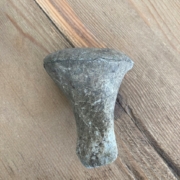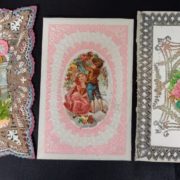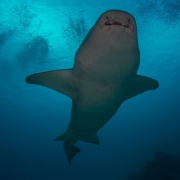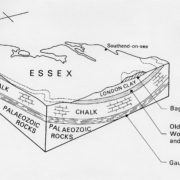Identification – Fossil sponge in flint
Some flints do contain fossils, or look like whole fossils. Fossils inside the flints are often sea urchins, or cockles or other small shellfish. Sometimes, the whole flint looks like fossil, and this may be because the silica that created it was forced into a hollow space in the hardening chalk filled by a sponge. The silica fills the gaps in the sponge’s skeleton, and over millions of years, the skeleton itself can dissolve away and be replaced by other minerals. This skeleton is a fossil, and the flint fills the spaces left by the soft parts of the animal after they rotted away.

Typical funnel-shaped sponge, fossilised in flint. © L Hodgson.
The shape of this piece of flint looks a lot like a small sponge that lived on the sea floor, and was fossilised in flint as the thick mud solidified into chalk. It may have patterns inside it that show the structure of the sponge’s skeleton. The wiggly line around the widest part of the flint shows the top rim of the sponge and the rough texture of the line is the surface texture of the sponge preserved as a fossil.
More info on flint and chalk in Essex in this post from 2020. https://saffronwaldenmuseum.swmuseumsoc.org.uk/identification-flint-fossil-sponge/










